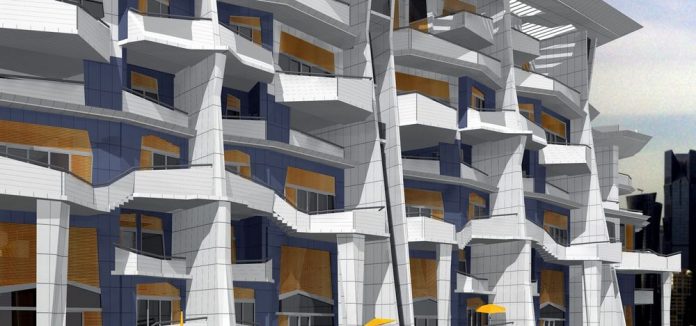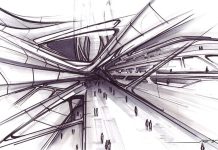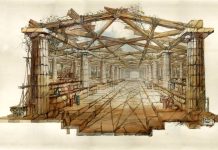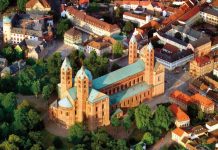On the significance of architecture, in the western world, remain today , the concepts inherited from the past that rotate, in different ways and anyway, around those expressed by Vitruvius as concepts Firmitas (solidity) (physical structure), Utilitas (for the use of men) (needs) and Venustas (beauty, aesthetics) (formal perfection).
All theorists of the architecture from Barbaro to Leon Battista Alberti, to Palladio, to Militia and to modern architects of the twentieth century revolve around a concept of architecture as a formal expression of artistic type, then tied to individual ability to express in the construction of the architectural spaces a value of “aesthetic” (proportion, beauty, perfection, harmony, elegance, order, synthesis, ecstasy, ….) never well defined (and not definable as the “myths”) and mainly related to the “fame” and “authorities” of the author.
To exit the solipsism, derived from all of these concepts expressed as “opinions” unproven (although illustrious) and not to fall into some “fallacy” logic is necessary to clarify what are the components of the universe of the architecture to establish in a way controllable and falsifiable (Popper) what is the architecture.
The components are, without doubt, fundamentally two:
- The natural component that considers both the physical aspect (material) of the architecture, and therefore addresses the problems of strength, durability, resistance to gravitational component (physical sciences), both the relational aspect of the space defined by the architecture with existential needs which have determined its existence (biological sciences);
- The cultural component which is considered as an added value to the natural component (of which the decoration is one particular example and where the choice and research of spatial geometries not derived from the needs of the natural component of it is the rule) and which represents the vehicle of historical and political values of the era (the fashions, styles, patterns of behavior, the icons of power (primary power) and the social role of belonging (secondary power), the advertising icons of the Marketing the civil construction. …) historically included in so-called aesthetic values.
The natural component is component that identifies:
- the architecture as an artifact produced by a biological entity (human) and therefore subject to the chance and necessity and which plays the role of reducing and controlling the selective pressure of the environment (in this sense, the architecture is not only a prerogative human but of all living species);
- the architecture as a product of the relationship between a biological entity (human) and the physical environment and that, in its being a space constructed with natural materials, simple or compound, is subject to climatic components, to influence of the time and to gravitational forces;
- the origin of the reasons for its existence in the needs (human), individual and collective, organizing its relationships and the specific qualities;
- the relationship and the relationship between his being an artifact and the biological characteristics of the species (human), (a man with wings would have generated an architecture without stairs, a nest);
- the place of physical measurement, size, temperature, humidity, ….
The cultural component is the component which addresses:
- the problem of transmission of experiences sedimented (fact common to all living species) for imitation or for cultural transmission (the linguistic communication is specifically human );
- the problem of spatial form intervening and influencing the formal choices derived from natural component [see the nuptial nest of the bird gardener (ambliornite) (K.V .Frisch)] to historical purposes (and political) of their time;
- The problem of their evolution by chance (the formal transformations are sometimes a result of errors which are culturally accepted and that trigger a new formal system) and the necessity (the social development [and political] results in a change of needs and of the models formal of that particular moment in history, the formal inventions are always an interpretation and the consequence of the social transformations in all living species).
It is evident that all of the expressions above are susceptible to empirical evidence, and therefore, can be the basis of a definition “real” of the architecture.
On the basis of what is expressed we can state that:
- exists a phenomenon clearly identifiable obvious and incontrovertible that is historically recognized as “Architecture”;
- this phenomenon is common, according to the various levels of evolution, to all living species;
- This phenomenon manifests always as a controlled transformation of the natural environment: this transformation always follows the laws of gravity and is linked to the environmental conditions of the territory or ecological niche on which it acts;
- the field of connotation of this phenomenon is always derived from the needs of the species both as needs “natural” both as needs “cultural”;
- This phenomenon has a duration that always depends on two factors;
-
-
- a factor of environmental durability of the materials, simple or complex, that constitute it;
- a factor of the permanence of the validity of its connotation in relation to the needs historical and evolutionary of the species6;
-
- The field of connotation is measurable and describable in Meaningful Units.
As derived from these premises we can assert that:
The architecture, in any environment, is expressed always with the same structural identity, adapting their own meaningful units to the environment natural and cultural in which it manifests .



















